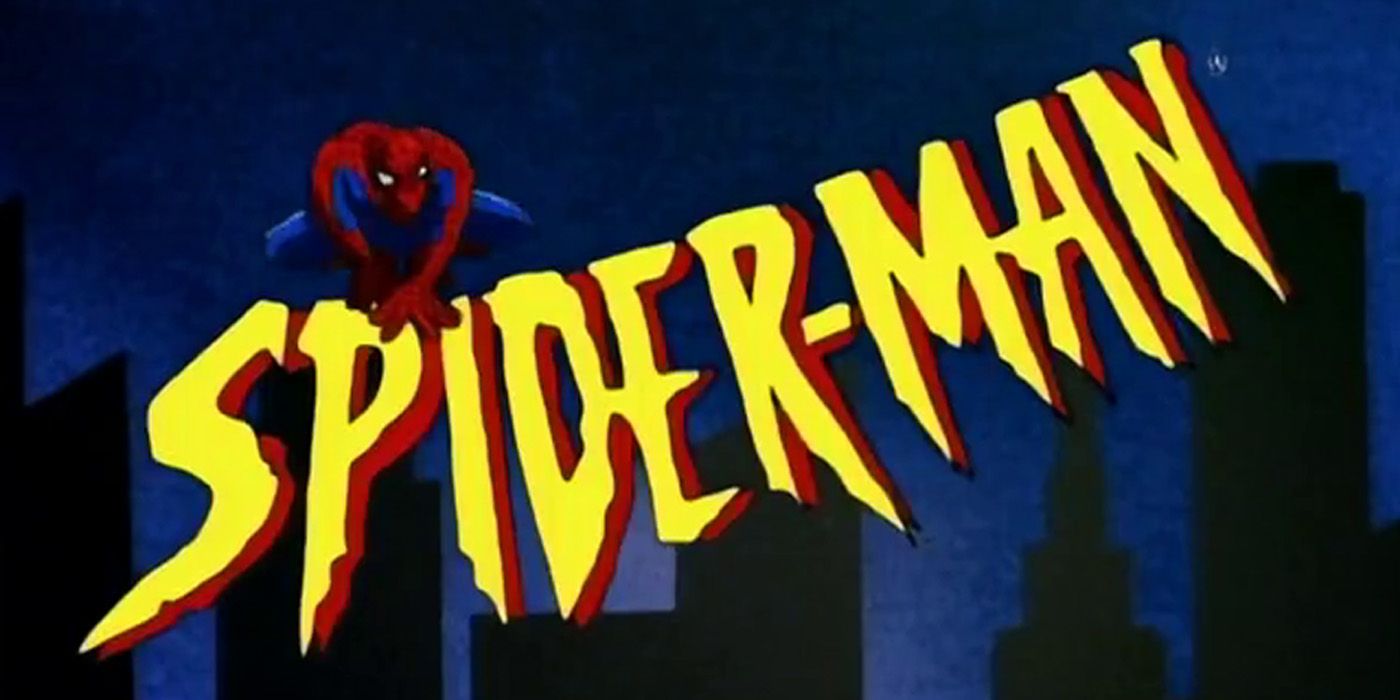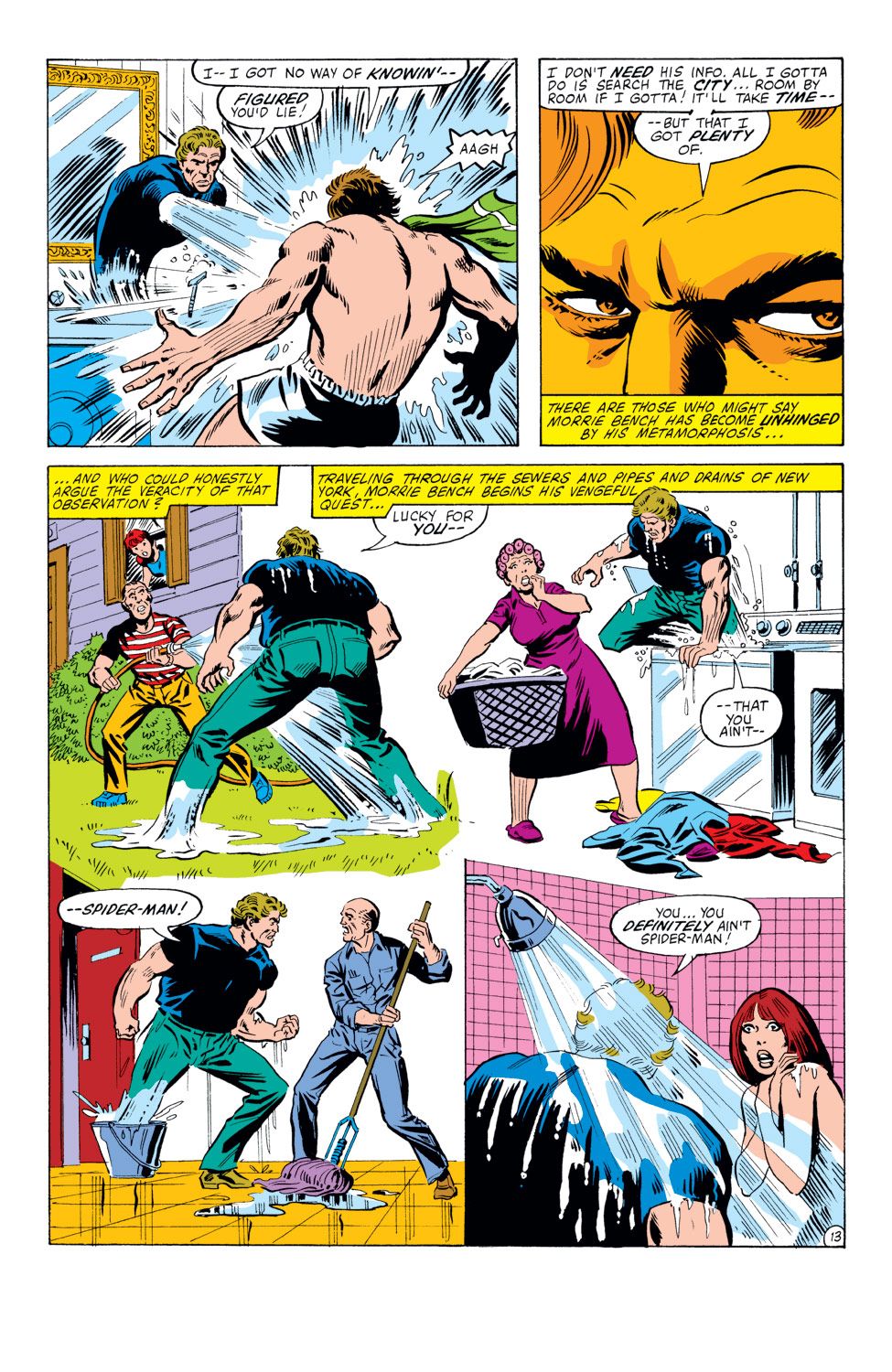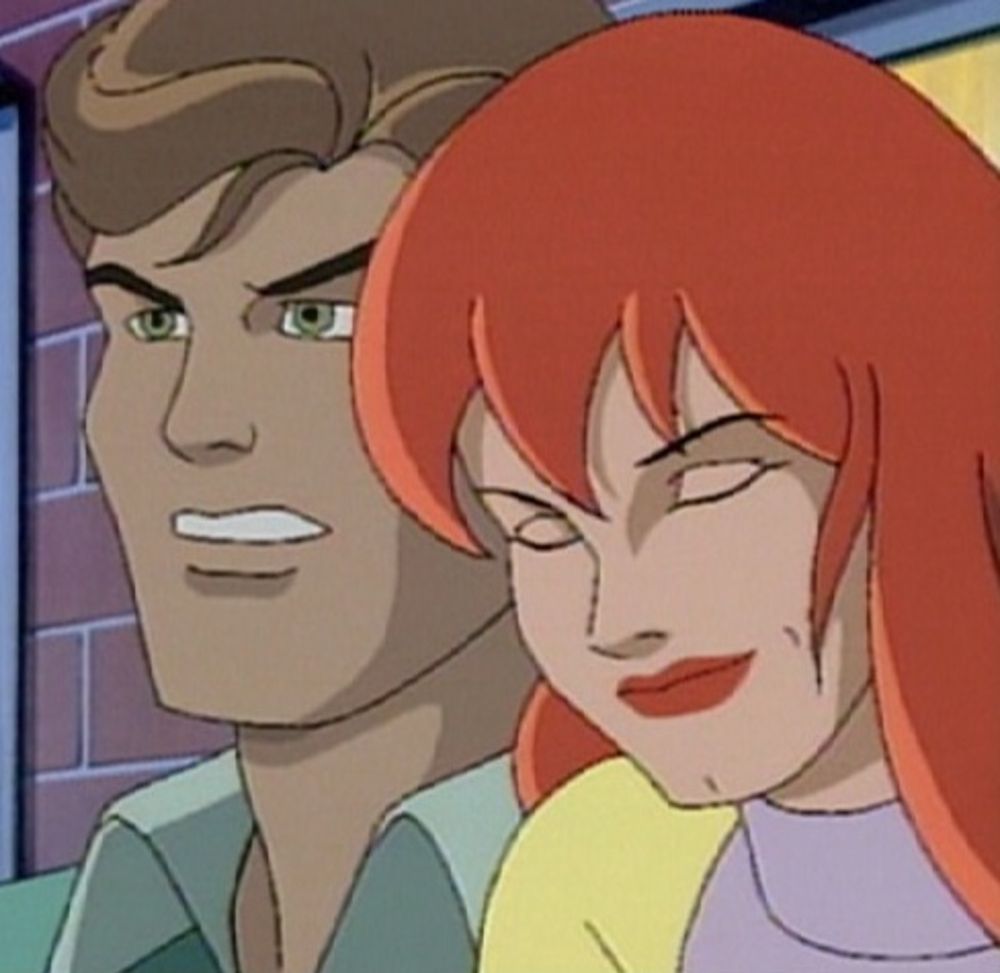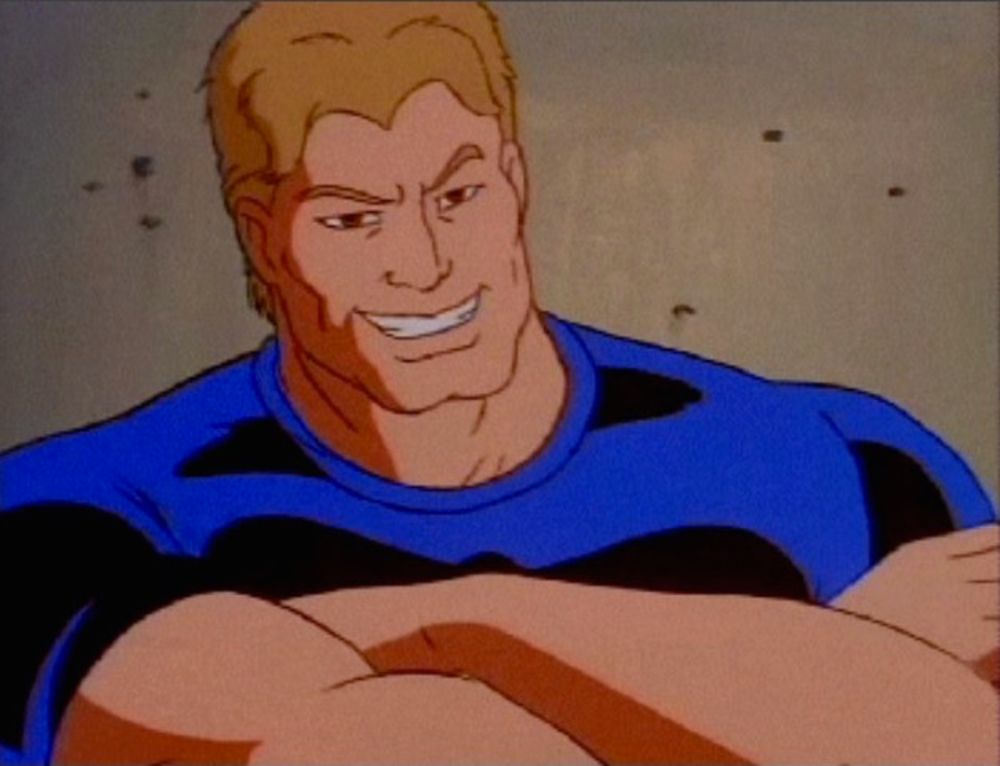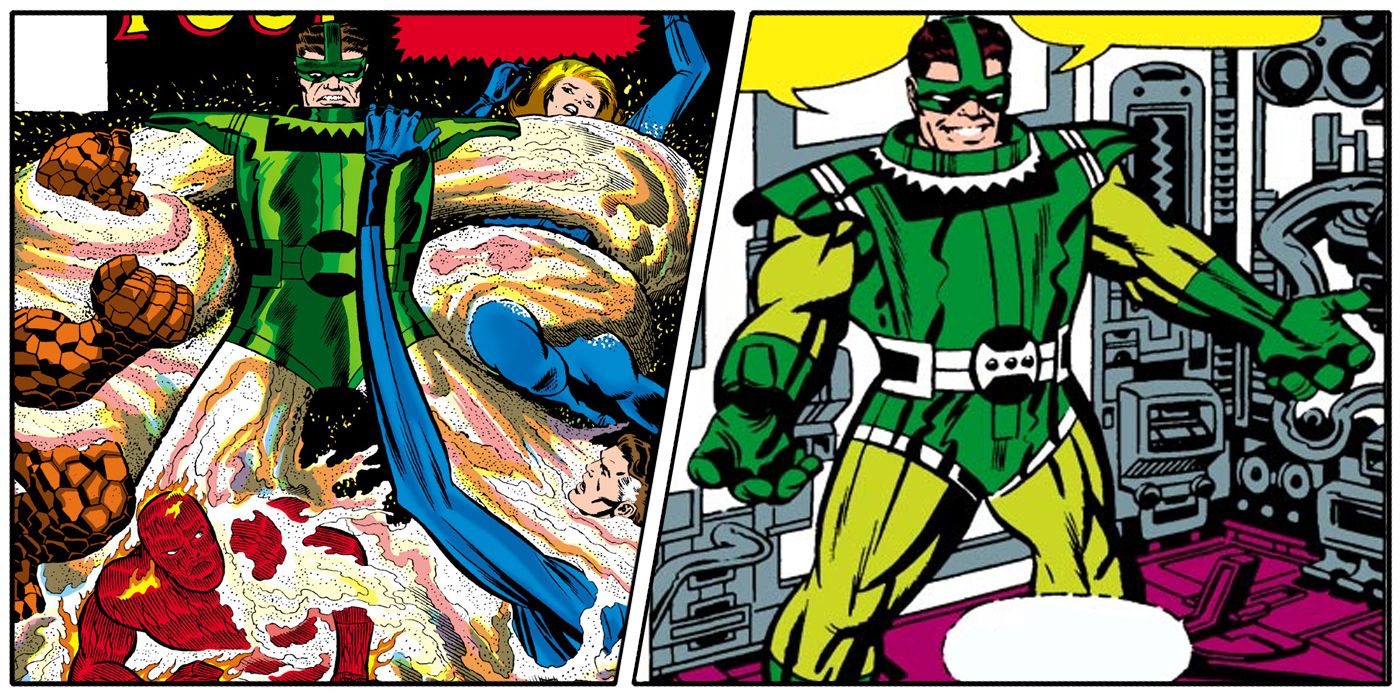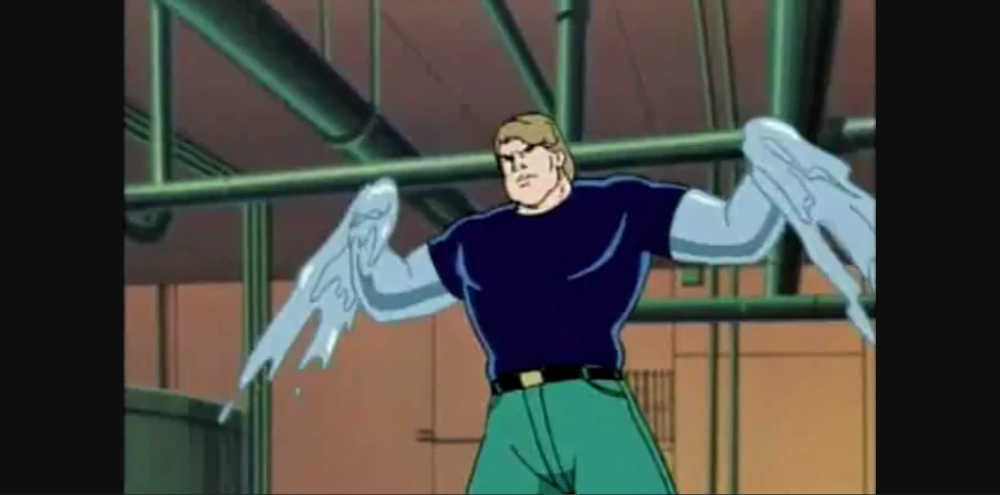Welcome to Adventure(s) Time's 131st installment, a look at animated heroes of the past. This week, the brief ascension of an obscure Spider-Man villain, granted some sunlight in the 1990s, chiefly because another character wasn't available. And if you have any suggestions for the future, let me hear them. Just contact me on Twitter.
Debuting on September 23, 1995, "Hydro-Man" is the third episode of Spider-Man: The Animated Series' second season, written by John Semper, Jr. and James Krieg. Like many episodes of the show, it takes inspiration from a specific issue from the comics. This time, it's 1981's Amazing Spider-Man #212 from writer Denny O'Neil and artists John Romita, Jr. and Jim Mooney.
That issue opens with Spider-Man aiding the crew of the S. S. Bulldog as they lower a special power generator into the ocean. (Thanks to a heatwave, and the events of the previous issue, Spider-Man's agitated by an itchy, brine-soaked costume.) When the generator enters the water, one of its live electrical cables snaps, placing the crew on deck in jeopardy. Spider-Man rushes to deal with the cable, pushing aside some crates and inadvertently knocking over a crew member named Morrie Bench. What follows is a supervillain origin story that easily could've appeared in one of the Stan Lee/Steve Ditko issues.
The energy conversion reaction within the generator combines with nearby volcanic gases in the water to form a bizarre, unexplainable energy source that suffuses Bench. Although he should be chopped to bits by the ship's propeller, Bench survives. Soon, he realizes he possesses the ability to alter his body into water. Declaring himself Hydro-Man, Bench declares vengeance on Spider-Man for his role in making him a freak.
His plot consists of terrorizing random New Yorkers by making sudden appearances through their water pipes until he manages to attract Spider-Man's attention. Not exactly an inspired creation, but certainly not the worst Spider-Man foe created in this era. Hydro-Man's been good for the occasional non-ironic appearance over the years, unlike duds like Big Wheel and the Hypno-Hustler.
Years later, "Hydro-Man" introduces the villain to a television audience in a surprising fashion. Instead of stalking Spider-Man, in this canon, Morrie Bench is stalking Spider-Man's love interest, Mary Jane Watson! For reasons unknown, Morrie Bench was reinvented on the show as Mary Jane's high school boyfriend. Remarkably, her teenage love interest would also happen to encounter an accident of science that grants him superpowers. What are the odds?
After introducing Hydro-Man in an opening action sequence (which has him stealing a pearl necklace on display at an aquarium), we move on to the personal life material. Peter Parker meets Mary Jane at the Coffee Bean, where she receives a disturbing phone call from Bench.
Mary Jane agrees to meet with Bench at Seville Hotel, but only to tell him that she never wants to see him again. The tone is clear, even if the script doesn't go into specifics. Bench is portrayed as not only a stalker but also an abusive boyfriend. Throughout the episode, Spider-Man must rescue MJ from Bench, who refuses to accept that she doesn't love him. Along the way, we have some of the show's earlier hints that there's more to MJ than her party girl persona, as she reflects on her troubled relationship with her father. It's not exactly effective, given the breakneck pacing of the show and sheer absurdity of casting her abusive ex as a supervillain, but it's an appreciated gesture. The best moments of Spider-Man do attempt to maintain the humanity found in the source material.
So, what's Hydro-Man's origin if he's already a villain here before meeting Spider-Man? Mary Jane asks the obvious question you'd have to ask after finding out your high school ex now has super powers. Bench explains that after being expelled from school, he joined the Navy, where he was assigned to a special research division. An accident involving a mini-sub had Bench dragged underwater.
After the mini-sub crashed into the ocean floor, the earth cracked open and released a mysterious gas that gave Bench the ability to transform into water. More ridiculous than his comics origin, but one element here does make more sense. Rather than becoming obsessed with Spider-Man, this Hydro-Man immediately uses his powers to commit robberies.
The episode's climax borrows another element from the comics. Both stories have Spider-Man tricking Hydro-Man into hotter and hotter environments, forcing his body to continually evaporate while on the rooftops. In the comics, it's a clothesline full of laundry and a heap of old newspapers that ultimately do Hydro-Man in.
In the cartoon, MJ's along for the ride, delivering the final victory by luring Hydro-Man further and further away from the nearby river and throwing a bucket filled with dust in his face.
Interestingly, the censors were okay with Hydro-Man apparently dying in the episode's climax. Although he was cloned in a later episode, this is the show's only appearance of the true Hydro-Man.
It's not his only appearance in the canon of the 1990s Marvel animated series, however. One week after this episode's debut, Hydro-Man appeared as a member of the Frightful Four in "And the Wind Cries Medusa," an episode of the syndicated Fantastic Four cartoon.
That episode is a straightforward adaptation of a comics storyline that featured Sandman in Hydro-Man's place. Fans determined to fit all '90s Marvel cartoons in the same canon simply place the Fantastic Four appearance as taking place before his Spider-Man episode. Hydro-Man shows up on Fantastic Four for the same reason he was selected for the Spider-Man series: the James Cameron Spider-Man film that never actually made it to screen.
Cameron's reinventions of Electro and Sandman were scheduled as the villains. Executive Producer John Semper has said: "There really isn’t much difference between Sandman and Hydro-Man when you get right down to it. So look at it that way. I used Hydro-Man and you’ll get a good idea of what I probably would have done with Sandman. But since I used Hydro-Man, I didn’t need to use Sandman." (Electro would appear years later on the show, after Cameron abandoned plans for his Spider-Man movie.)
Certain legalities regarding the films hindered the animated adaptations. Another example was an early plan for the follow-up to Spider-Man: The Animated Series to focus on his earliest years as a hero. However, because that period was being covered by Sam Raimi's upcoming film, plans were scrapped and 1999's Spider-Man Unlimited was developed instead.
DESIGN-Y
The simplicity of Hydro-Man's outfit, a black shirt and brown pants, might've been an intentional nod towards Ditko's equally simple look for Sandman (a striped green shirt and brown pants). Jack Kirby famously ditched that look for Sandman's Fantastic Four appearances, though, giving him a more traditionally outlandish supervillain look.
CREATIVE DIFFERENCES
Although the episode always aired under the name "Hydro-Man," it's shown up on streaming services with its working title, "I Cried A River Over You."
HEY, I KNOW THAT VOICE
Animation veteran Rob Paulsen (probably best known as the original voice of Raphael on Teenage Mutant Ninja Turtles) voices Sandman on Spider-Man, while a week later on Fantastic Four, he's voiced by sitcom star Brad Garrett.
APPROVED BY BROADCAST STANDARDS & PRACTICES
Writer James Krieg has stated the network censors objected to Hydro-Man's portrayal as a stalker. Specific language indicating abuse and stalking isn't used in the episode.
"AS INEVITABLE AS THE TIDES"
The highest compliment to pay "Hydro-Man" is that it has the feel of a Season 1 episode. Visually, fewer scenes look as if they've been farmed out by TMS, the animation studio hired to produce the show, so the anime-influenced feel of the opening year is present. This isn't the best-looking episode, but it far surpasses the amateur visuals of the season's two-part opener.
The structure is also similar to the first year's stories. Peter Parker faces an obstacle in his personal life, we learn more about a member of the supporting cast, a villain is introduced with an origin flashback, and the conflict is resolved by episode's end. Nominally, this is the third chapter of the season's bloated "Neogenic Nightmare" story arc, but only lip service is paid to any subplots. It's a more grounded story about the cast facing a problem that doesn't require episode after episode to resolve.
Regrettably, the character work often feels slightly shallow. The pacing of the show is always rushed, so there's never an opportunity for any moment to breathe. And while the musical score is fine, it's used relentlessly throughout every scene, always blaring at the audience, distracting from the dialogue and undermining whatever emotion we're meant to be feeling. There's also the basic absurdity of plucking Hydro-Man of all characters out of the canon and casting him as MJ's high school boyfriend. Still, it's actually one of the better episodes of this year, a done-in-one that marks an end of the era for the series.
Hey, my latest novel Love is Dead(ly) is now free for Kindle Unlimited subscribers! Follow the adventures of Brad Burns, the Paranormal Desperado you either hate to love or love to hate.

